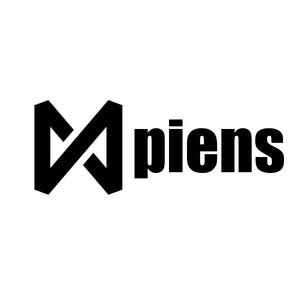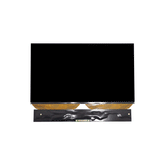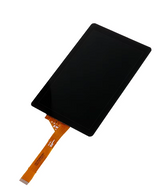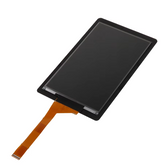Protolabs Report: Soaring Growth in 3D Printing for Production
12 Jun 2024
0 Comments
On June 9, 2024, Xpiens reported that Protolabs, a leading provider of on-demand digital manufacturing, has released its annual 3D Printing Trend Report for 2024. The report paints a positive picture of the global 3D printing industry, highlighting market growth, ecosystem maturity, and innovative technological advancements.

Protolabs Trend Report 3D Printing Market Growth and Forecast
Based on insights from over 700 engineering experts, the report reflects a confident outlook on the additive manufacturing market. It emphasizes the growing potential of new micro and large-scale applications, as well as the increasing use of 3D printing for final part production.
According to Protolabs, the growth rate of the 3D printing sector has exceeded expectations by 10.5%. The market size is expected to grow at a compound annual growth rate (CAGR) of 21% to $24.8 billion in 2024, with projections reaching $57.1 billion by the end of 2028. This valuation aligns with data from market intelligence firm Wohlers Associates, which anticipates the market will be worth $20 billion in 2024.
Moreover, Protolabs' report indicates that 70% of businesses increased their usage of 3D printed parts in 2023 compared to the previous year, with 77% of respondents citing the medical sector as having the most significant potential impact.
According to Protolabs, the growth rate of the 3D printing sector has exceeded expectations by 10.5%. The market size is expected to grow at a compound annual growth rate (CAGR) of 21% to $24.8 billion in 2024, with projections reaching $57.1 billion by the end of 2028. This valuation aligns with data from market intelligence firm Wohlers Associates, which anticipates the market will be worth $20 billion in 2024.
Moreover, Protolabs' report indicates that 70% of businesses increased their usage of 3D printed parts in 2023 compared to the previous year, with 77% of respondents citing the medical sector as having the most significant potential impact.
3D Printing Shifts from Prototyping to Production
One key trend outlined in the Protolabs report is the shift of 3D printing from prototyping to mass production of final-use products. This shift is driven by global supply chain vulnerabilities and a growing demand for localized production under environmental sustainability goals.
Protolabs data shows a notable increase in the production volumes using 3D printing. In 2020, 36% of respondents stated they printed more than 10 parts in a single production run. This figure rose to 49% in 2021 and is expected to reach 76% by 2023.
Protolabs data shows a notable increase in the production volumes using 3D printing. In 2020, 36% of respondents stated they printed more than 10 parts in a single production run. This figure rose to 49% in 2021 and is expected to reach 76% by 2023.

3D printed production run of an end-application part. Image courtesy of Protolabs.
The proportion of respondents using 3D printing for over 1,000 parts per production run increased from 4.7% in 2022 to 6.2% in 2023, reflecting a shift towards batch manufacturing of end-use parts.

Production runs of 3D printed parts in 2023. Image via Protolabs.
AI and 3D Printing: A Growing Partnership
Artificial intelligence remains a hot topic in the tech industry. Companies like AI Build, Siemens, Authentise, and Materialise have integrated this technology into their 3D printing software. However, according to Protolabs, the full potential of AI has yet to be fully realized in the 3D printing industry.

What impact will AI have on the 3D printing industry? Image via Protolabs.
Material Innovation in 3D Printing
According to Protolabs' 2024 report, the expansion of new materials will play a crucial role in the future development of 3D printing applications. 31% of respondents believe that multi-material 3D printing will have the most significant impact on the additive manufacturing field.
Protolabs emphasizes the growing trend of materials with unique properties such as elasticity, conductivity, and heat resistance in the 3D printing market. It also highlights lightweight materials with dissipative properties, higher stiffness, and lower UV sensitivity, which are becoming increasingly popular and are set to transform 3D printing practices.
Protolabs emphasizes the growing trend of materials with unique properties such as elasticity, conductivity, and heat resistance in the 3D printing market. It also highlights lightweight materials with dissipative properties, higher stiffness, and lower UV sensitivity, which are becoming increasingly popular and are set to transform 3D printing practices.

The technology that will have the greatest impact on the future of 3D printing. Image from Protolabs.
The Future of 3D Printing
Protolabs' Supply Chain Manager, Grant Fisher, notes that the use of ceramics can produce unique parts with excellent thermal performance. Additionally, TPU used in powder-based technologies like MJF and SLS is emphasized as a bridge between rubber and plastics due to its flexibility and durability, making it ideal for gaskets, seals, wearable devices, and medical applications.
As knowledge and education continue to grow, new ideas and opportunities are expected to revolutionize the 3D printing industry in the future. Protolabs believes that as the pace of development accelerates, the entire manufacturing sector will continue to undergo rapid transformations, integrating automation, sustainability, and broader adoption in manufacturing, marking significant progress for the industry.
Tags:











Leave a comment
Please note, comments need to be approved before they are published.